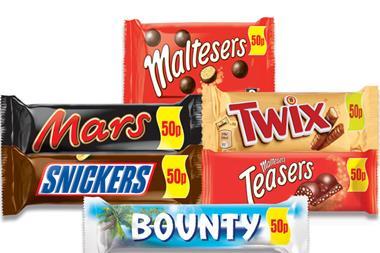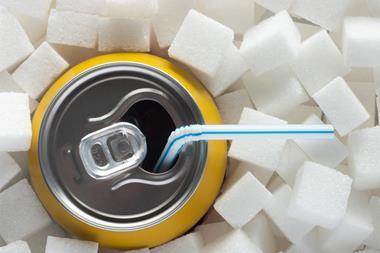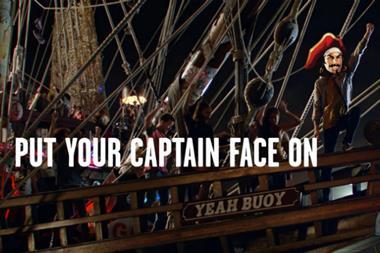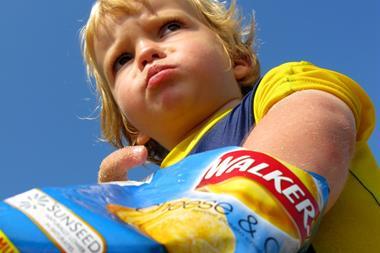It’s a big wide web out there. Trolls lurk behind tweets, bullies post pernicious lies, strangers groom children in their homes. But, disturbingly, it isn’t only the blatant bad guys that are doing damage to our kids online, according to a damning report from the Irish Heart Foundation in June.
‘Subtle, sophisticated and surreptitious’ tactics are increasingly used by global food and drink brands to woo children into adult obesity, claimed the research, with a chunk of the £2.5bn the Internet Advertising Bureau says was spent by the industry on online ads in 2015 used on colourful cartoons, advergames and YouTube clips.
Even worse, the most prolific are products packed with salt, fat and sugar (HFSS) dangled to young browsers using humour, freebies and vloggers. And parents are left none the wiser. Brands are “engaging in a large scale uncontrolled experiment in children’s behaviour” and “we have no access to information of how much, and who, is being targeted,” says author Dr Mimi Tatlow-Golden, a child psychologist.
Wary of criticism some suppliers have introduced new guidelines on marketing to children. But given the PM unceremoniously scrapped tighter controls on advertising from the childhood obesity plan last month how serious is this issue? Who are the biggest villains of the piece? And what more should - or could - be done to stop them?
The Committee of Advertising Practice Code says:
For now online ads for food and soft drinks must not:
- Condone or encourage poor nutritional habits or an unhealthy lifestyle in children (anyone under 16)
- Encourage excessive consumption of food or drink products
- Use promotional offers in an irresponsible way
- Use ‘high pressure’ or ‘hard sell’ techniques
- Use licensed characters or celebrities popular with children if ads are targeted directly at pre-school or primary schoolchildren
- Give a misleading impression of the nutritional benefit of products
In the future the CAP proposes to:
- Apply the existing rules prohibiting the use of promotions and licensed characters and celebrities popular with children to HFSS product advertising only, allowing more creative ways for healthier foods to be advertised to children
- Introduce a new rule to limit where advertising for food and soft drink products high in fat, salt or sugar (HFSS) can be placed in all non-broadcast media, including online
- They’ve asked for feedback on whether or not this new scheduling rule should apply only to children under 12, or include all those under 16
Around 10% of top food & drink brands have explicit ‘child orientated content’ on their own website, the IHF research uncovered, via child-friendly tabs or cartoon characters. Though some kept this ‘minimal’, others were ‘substantially’ kid-centric. The UK site of Pom-Bear’s UK site (a ‘melt in the mouth’ potato snack with more fat per 100g than either Hula Hoops or Doritos) is populated with cartoon bears, ‘family fun’ and fluorescent orange, the report notes. And the McDonald’s Happy Meal site launches with music, animation and interactive games.
The fast food chain does warn ‘Kids, this is advertising’, the report accepts, even if in ‘exceptionally small type’ that’s ‘swamped [by] engaging fonts and visuals’. And that makes it markedly more upfront than the ‘stealth’ advertising found elsewhere.
Pringles is “one of many” recent offenders, suggests Tatlow-Golden, with the brand launching an online summer promotion to turn its packs into karaoke kits.
Though technically only open to 18-year-olds, it attempted to “recruit children as well as adults to become marketers for their products” by switching from the straight sell to “emotion, engagement and entertainment”. “They’re using these tactics to become not just an advertiser but a person in young people’s eyes,” she adds. “And for me this is very pernicious because it changes the nature of the relationship.”
Of course, “emotion, engagement and entertainment” are almost as old as sex when it comes to selling, but digital creates endless new opportunities for more subtle marketing, says Netmums MD Rimi Atwal. “TV ads are a very analogue approach compared with the digital landscape these children grow up in, where it’s the subtler ways it can be done, from a brand video that grows in influence to in-app adverts,” she says. “It’s becoming ever more sophisticated. Sometimes children don’t even realise these are marketing messages.”
Social media
It’s in the ‘exciting peer saturated environment’ of social media that this disingenuousness is most rife, found the report.
Food and drink Facebook pages with the greatest reach to young consumers were almost exclusively for HFSS, and of 354 brand posts analysed, more than a quarter didn’t mention the product at all, opting for ‘subtler promotional strategies less easily identified as advertising’ such as licensed characters, competitions and humour.
Though Facebook, Instagram and Snapchat say all users must be at least 13, studies have found more than half of children are using them by the time they’re 10 - simply by entering fake birth dates.
“There’s not a child age nine or 10 that doesn’t have at least one digital device,” insists Atwal. “They’re on apps, YouTube, videos, gaming, messaging each other, doing Instagram, and Snapchatting at a very early age so it’s very difficult for parents to police the channels they’re on.”
Gary Pope, director at marketers Kids Industries, disagrees. “What we see is that parents won’t allow children on the internet, they’re preferring apps because they’re closed,” he says. “We probably don’t target children at all with any communications anymore. We’d always advise our client to go for the parent.”
And he’s convinced that approach is now the norm across fmcg. “I struggle to think of a campaign running digitally at the moment that I would raise an eyebrow at” as brands have “realised digital is a minefield.”
Yet this conflict over how much children are exposed to online content is the problem insists Dr Tatlow-Golden, who says platforms such as Facebook use data to target the right ads to the right consumers, and no user will see the same content. For example, data from “a small child using a tablet is being collected, re-used, sold on and used to deliver marketing to that device and so every child and every family is going to have a different profile of advertising they’re seeing,” she explains.
“Sometimes children don’t even realise these are marketing messages”
And unlike TV ads, where researchers can look at ratings figures held by public service broadcasters, this digital exposure is kept under lock and key by corporations that “consider it commercially privileged and won’t share.”
Any exposure to content from HFSS marketing online could be fuelling the obesity epidemic she adds. “We have so much research that tells us completely convincingly that marketing does affect children’s eating behaviours.”
GFK Market research has shown the impact can be up to four times higher than TV. For example, in one Coca-Cola campaign Facebook accounted for 2% of the budget, but 27% of incremental sales. And Cadbury’s family-friendly Chocolate Charmer campaign generated 20% of new sales from online activity despite spending only 7% of the budget on digital.
“Marketers call it ‘the brand in hand,’” says Tatlow-Golden. “When you view content on your phone it’s in your hand, it’s part of your body. It makes it much more intimate, whereas the TV is always physically distant.”
It’s led to a sense of helplessness among parents who feel cheated by brands that take advantage, points out Atwal. Netmums research found 80% are convinced their kids are more exposed to marketing than they were as children. “It’s very difficult for parents to keep up as digital tactics become ever more sophisticated.”
Ads banned by the ASA
Swizzles
Sweet brand Swizzles was labelled “inappropriate” in August 2012 for marketing its Love Hearts and Drumstick lollies to kids online. There was a virtual area called Swizzles Town and a Scooby-Doo section. But what tipped the ASA over the edge to uphold the complaint was Cola Capers, a game where children fled angry parents to collect cola sweets. The game “irresponsibly encouraged poor nutritional habits in children” they concluded.
Weetabix
Kids weren’t engaging in ‘wholesome fun’ on the Weetabix website in February 2013 with an app and 14 branded games all attacked by the Family & Parenting Institute. The Weetakid app targeted children ‘by making them feel inferior or unpopular for not buying a product’, alleged the Institute, as it zapped energy from characters who didn’t eat up all their Weetabix. The ASA were convinced, rejecting Weetabix’s argument it all took place in a ‘fantastical world’ and banning it in its current form.
Honey Monster Puffs
Halo Foods’ hyped rebrand of Sugar Puffs in 2014 hit a stumbling block when the ASA upheld a complaint against the ‘Yummy Honey Goodness for a Monsterfied Breakfast’ claim on its website. ‘Honey goodness’ was an unsubstantiated health claim, alleged the Children’s Food Campaign, that could mislead consumers, young and old, over the health benefits of tucking into a bowl of the sweet cereal. The ASA agreed and banned the claim from its website.
So if parents can’t, who can keep brands in check?
As mentioned, some self-regulate. Since 2010 Coca-Cola says it hasn’t marketed products “directly” to children under 12 by rejecting ads where more than 35% of the audience is younger, although for online this will only apply “where data is available”.
“The Coca-Cola Company is committed to monitoring and measuring our adherence to this policy across all the markets we serve, and has established a Children’s Review Process to help guide our policy,” it says.
Mars goes further. Since 2007 no more than 25% of viewers can be under 12, and where a website targets those 13 and under “we stay clear.” Online it also often uses websites that restrict access by requiring users to enter their birth date to enforce its policy.
Mondelez made the same commitment in January and now targets parents instead.
“The CSR departments in fmcg organisations have got wise to the fact that parent groups just won’t stomach it,” says Pope. “They’ve been hamstrung not by regulation but perhaps by common sense.
“Look, my job is to make money from children. But we have to do it in an emphatically, morally responsible way otherwise it goes horribly wrong.”
Does self-regulation lack teeth?
Self regulation isn’t enough though, argue critics. And policies only protect children under 12, which even the FDF has admitted is problematic. Corporate affairs director Tim Rycroft has said ads should not be “targeted at under-16s in any medium” despite prominent members, including Coca Cola GB sticking at 12.
Disagreement over this upper age limit was also a focus of proposed changes to the Committee of Advertising Practice Code (see box) that currently sets content rules for all viewers 16 and under.
These rules are mandatory for fmcg companies, says spokesman Craig Jones, with its six restrictions on child-related content enforced by the ASA.
To uphold the Code the ASA relies on the public to be its “eyes and ears”while its compliance department “scour through ads on a daily basis” as “we want to be on the front foot,” says spokesman Craig Jones.
The sheer scale of online doesn’t faze the team, Jones adds. “Yes, it’s a big world out there on the internet but we’ve been doing this for a while.”
However since 2010 (when its online remit was extended) it has only a smattering of online breaches to show, while only 67 complaints have been lodged on online content in 2016 so far, although the consultation has just closed on its proposals to tighten up the rules, which aim to bring digital ads into better sync with broadcast. Feedback will now be reviewed and agreed changes to the Code announced in the next few months.
Online “isn’t one of the really big systemic drivers of our caseload but I don’t want to understate its importance” adds Jones. “We try not to be overly complaints led, so even if something doesn’t make up a big proportion of our caseload it doesn’t stop us giving it [the necessary] level of attention or taking it seriously.”
CAP is still effectively self regulating though. The ASA’s rulings don’t have the force of law, and the Code is drawn up by appointed industry figures. That means it lacks teeth, say critics. The current system is “weak”, says the Children’s Food Campaign, with “vague” rules and a “narrow remit”. It’s why many had hoped Theresa May would tackle marketing HFSS foods to children as part of the childhood obesity plan.
Instead, the plan shows “a distinct lack of gusto for challenging the junk food and advertising industries that promote obesity and ill health,” bemoans campaign group Sustain’s co-ordinator Kath Dalmeny. “We expect better, particularly from a new PM who came in on a promise to improve everyone’s life chances.”
Jones is less concerned. “In a sense there is [already] regulation,” he insists. “And the consultation we’ve just closed is pretty wide-ranging.” If the proposals come into effect “we’ll be introducing a ban on online promotion of HFSS products targeted at kids and that’s not happened before”.
But for Tatlow-Golden - whose report recommends a ban of HFSS ads to kids, an end to celebrity endorsement and access to data that tracks children’s exposure - the government simply doesn’t realise the risk.
“We’ve sleepwalked into new forms of behaviour because social media and other web providers have made them available at no cost, except we’re paying a very high price for it,” she says. “We’re handing them all our information and the control over what our children see and do.”



















No comments yet